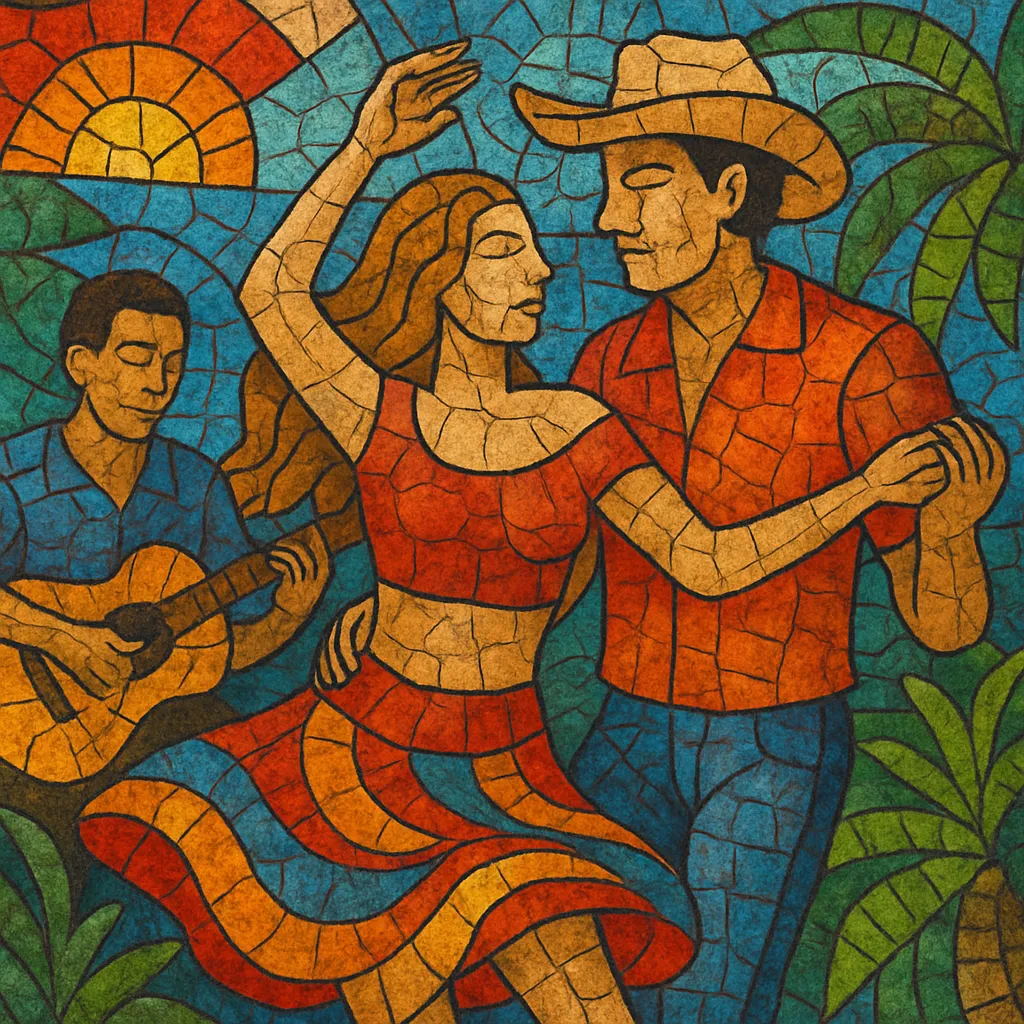Brega calypso is a dance‑pop substyle from northern Brazil that fuses the romantic melodies and soap‑opera lyricism of Brazilian brega with the bright, guitar‑driven rhythms of Caribbean calypso and regional Amazonian grooves.
The sound is marked by upbeat 4/4 tempos, syncopated percussion, staccato "guitarrada"-style electric guitar riffs, and glossy keyboard arrangements drawn from the tecnobrega scene. Vocals are passionate and theatrical, often telling stories of love, betrayal, and empowerment, with soaring choruses designed for crowd sing‑alongs.
The style crystallized in Pará in the early 2000s, largely popularized nationwide by Banda Calypso, and became a mainstay of dance floors and live shows across the North and Northeast of Brazil.
Brega calypso emerged in the cultural ecosystem of Belém, Pará, where local genres—carimbó and guitarrada—had long blended Afro‑Indigenous rhythms with electric guitar and percussion. In the late 1990s, the rise of tecnobrega brought affordable electronic production and sound‑system culture to neighborhood parties, setting the stage for a brighter, faster, and more pop‑oriented take on romantic brega.
Around the turn of the century, Banda Calypso synthesized these threads: calypso’s buoyant groove, guitarrada’s choppy lead‑guitar figures, and brega’s melodrama, presented with arena‑ready arrangements and key‑change climaxes. Their early‑2000s releases and relentless touring defined the brega calypso format—uptempo rhythms, call‑and‑response hooks, and show choreography—spurring a wave of groups across Pará and neighboring states.
As the style spread through regional radio, sound‑systems, and DVD‑centric live markets, other bands and soloists adopted the formula, sometimes leaning more into tecnobrega’s synthetic textures or into carimbó’s percussion. The genre’s visual identity—tropical colors, sequined costumes, and kinetic stagecraft—became as recognizable as its guitar tone and drum patterns.
Brega calypso helped normalize Amazonian grooves in mainstream Brazilian pop, feeding back into tecnobrega/tecnomelody production aesthetics and inspiring hybrid live shows that mix DJ culture with full bands. Even as artists branch into pop, sertanejo, and electronic fusions, the genre’s hallmark guitar chop, brisk tempo, and unabashed romanticism remain a regional calling card.


